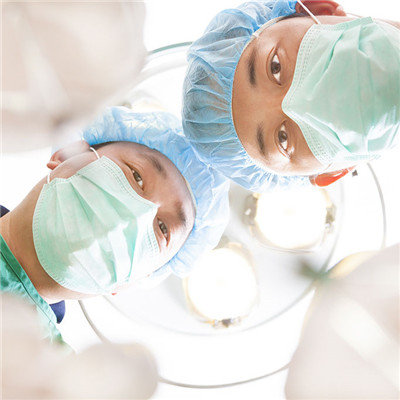The first two symptoms of parotid arch syndrome?
summary
The first and second branchial arch syndrome, also known as unilateral facial hypoplasia, is a secondary common facial congenital malformation except cleft lip and palate. It is mainly manifested as unilateral external ear malformation, often accompanied by ipsilateral mandible short, left and right facial development asymmetry, which seriously affects the appearance and psychology of patients. The main treatment is operation. The first two symptoms of parotid arch syndrome? Let's talk about it
The first two symptoms of parotid arch syndrome?
In the clinical manifestations of hemifacial microsomia, multiple anatomic sites can be involved with different severity, such as short and small affected face, weak subcutaneous soft tissue, chin deviation, facial nerve dysplasia, facial transverse fissure and external ear malformation. Among them, skeletal malformation, mandibular dysplasia is the most common and important, and severe cases can involve maxilla, zygoma, mandible, mandible The deformity of mandible is the most obvious, and the severity of mandible involvement is positively correlated with other parts of the face, including orbit, zygoma, external ear and soft tissue

The deformity of the mandible is characterized by dysplasia or absence of the ascending ramus of the mandible, and dysplasia of the body in all directions. The articular surface of condyle is flat, even absent. The temporomandibular joint is abnormal in position, hypoplasia, and even only a pseudojoint remains in the skull base. The angle of mandibular angle increased. Because of the asymmetry of mandibular development, the chin tends to the affected side, and the occlusal plane of the affected side moves up. Therefore, the vertical and horizontal shortening of the affected mandible and the rotation of the whole mandible on the horizontal plane lead to the deformity of the mandible in three-dimensional space.

Other craniofacial bone involvement is related to the severity of the mandible. The vertical height of the maxilla on the affected side is shortened, the occlusal plane inclines to the affected side correspondingly, and the eruption of the maxillary permanent molars on the affected side is delayed. Severe cases are accompanied by maladjustment of the zygoma, narrow zygomatic arch, or even missing. Maladjustment of the zygoma is directly related to the condylar process and ascending ramus deformity of the mandible. The mastoid process may have dysplasia, and the degree of gasification of mastoid chamber is different. The styloid process is shortened or absent. Orbital dysplasia in all directions is not common, some patients with microphthalmos. The frontal bone of the affected side was flat, similar to the appearance of oblique head deformity, but without unilateral premature closure of coronal suture. Cervical deformities include hemivertebra hypoplasia, malunion, and flat brainstem.

matters needing attention
Only plastic surgery can solve the problem. After diagnosis, the patient can be treated with correction of macrostomy and appendectomy after three months of age. Facial asymmetry involves bone and soft tissue of the affected side. When the child grows up, jaw lengthening treatment and soft tissue filling are performed. 5. Distraction osteogenesis can be performed from 6 years old to adolescence.

















